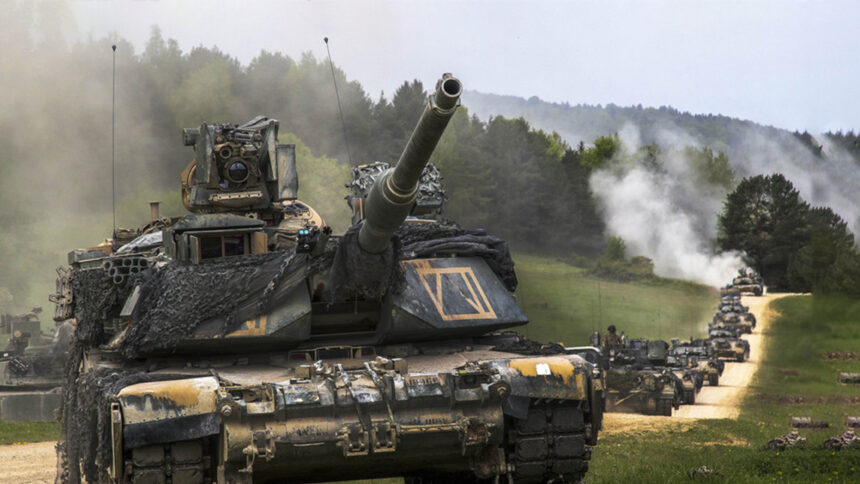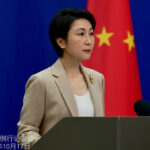The United States government, under the leadership of President Donald Trump, last week threatened military action against Nigeria over the alleged persecution of Christians in the country.
The threat has since been generating a barrage of reactions with many making references to U.S military interventions in Africa and how they turned out.
Some Nigerians, including human rights activist Omoyele Sowore, had stated that U.S military interventions in Africa come at a “great cost.”
Sowore, particularly warned Nigerians against celebrating Trump’s recent threat of military intervention in Nigeria.
Sowore stated: “The latest threat by US President Donald Trump to launch military action in Nigeria, allegedly to protect Christians, may sound appealing to some. Still, history has shown this to be perilous.
“Whether you are Christian, Muslim, animist, or non-religious, no one should celebrate such rhetoric.
“The United States and its allies have a long record of military interventions that leave nations more unstable than before.”
However, some Nigerians have opined that U.S military intervention is needed to crush terrorism in the country.
In the midst of the ongoing debates, Pan-Atlantic Kompass dives into five U.S military interventions in Africa and how they turned out.
Somalia (Operation Restore Hope, 1992–1994)
One of the U.S military interventions in Africa was done in Somalia after the collapse of the government and a famine in the country. The U.S. launched “Operation Restore Hope” as part of a UN-sanctioned mission to secure aid delivery and restore order. The initial phase successfully opened supply routes.
On December 4, 1992, the then U.S President George H.W. Bush stated: “The United States is acting for purely humanitarian reasons. I have directed that U.S. combat forces be introduced into Somalia to secure the air and seaports and key installations and to establish a secure environment for the delivery of the relief.”
The mission would later evolve from humanitarian aid to an effort at nation-building and capturing warlord Mohamed Farrah Aidid.
This development led to the Battle of Mogadishu in October 1993, which resulted in the deaths of 18 U.S. Army Rangers and Delta Force operators, and an estimated hundreds of Somali casualties.
Following public outcry in the U.S after the Battle of Mogadishu, the then U.S President Bill Clinton, on October 7, 1993, announced a gradual withdrawal of U.S troops.
Clinton stated: “Today I want to talk with you about our Nation’s military involvement in Somalia. A year ago, we all watched with horror as Somali children and their families lay dying by the tens of thousands, dying the slow, agonizing death of starvation, a starvation brought on not only by drought, but also by the anarchy that then prevailed in that country.
“This past weekend we all reacted with anger and horror as an armed Somali gang desecrated the bodies of our American soldiers and displayed a captured American pilot, all of them soldiers who were taking part in an international effort to end the starvation of the Somali people themselves. These tragic events raise hard questions about our efforts in Somalia. Why are we still there? What are we trying to accomplish? How did a humanitarian mission turn violent? And when will our people come home?”
The withdrawal has been seen by many as an abandonment of the nation-building goal, with Somalia descending back into conflict and instability.
Libya (Operation Odyssey Dawn, 2011)
Another example of U.S military interventions in Africa can be found in Libya. As part of a NATO-led coalition, the U.S. participated in air and missile strikes to enforce a UN Security Council resolution establishing a no-fly zone and protecting civilians from forces loyal to Muammar Gaddafi during the 2011 civil war. The U.S. provided initial airpower and command-and-control capabilities.
Explaining the rationale for the intervention, the then U.S President Barack Obama stated: “We will not, and I repeat, we will not deploy ground troops in Libya. But we will not stand idly by when a tyrant tells his people there will be no mercy. We will lead an international effort to protect civilians from the risk of attack.”
The strikes, alongside support for rebel groups, were instrumental in the overthrow of the Gaddafi regime.
The outcome of this specific action among U.S. military interventions in Africa ended with the success of the no-fly zone and regime change, but also with a long-term humanitarian and security crisis that continues to plague Libya and its neighbors.
Libya subsequently fractured into competing factions, creating a prolonged period of instability and a haven for extremist groups.
Liberia (Operation Assured Response, 1996)
In April 1996, the then U.S President Bill Clinton, who responded to a civil war in Liberia between supporters of Charles Taylor and Roosevelt Johnson, made an executive order for the United States armed forces to evacuate United States citizens.
The U.S. deployed a small force, codenamed Operation Shining Express, primarily to support the evacuation of U.S. citizens and to bolster the arrival of the international peacekeeping force.
Clinton on April 11, 1996, authorized the deployment but resisted heavy involvement.
He declared: “On April 9, due to the deterioration of the security situation and the resulting threat to American citizens, I ordered U.S. military forces to conduct the evacuation from Liberia of private U.S. citizens and certain third-country nationals who have taken refuge in the U.S. Embassy compound wishing to leave. U.S. military security assessment and enhancement teams deployed to Monrovia the same day in order to reinforce and assist the American Embassy. Evacuation operations commenced shortly thereafter. The evacuation, designated Operation Assured Response, is being carried out using MH-53 operators staged from Freetown, Sierra Leone. A small number of U.S. military aircraft are supporting this operation from Dakar, Senegal. Approximately 140 military personnel from the U.S. European Command’s Special Operations Command are involved in this operation and are backed up by forces from the Southern European Task Force, U.S. Army, Europe. I have also ordered the deployment of U.S. Navy amphibious forces to the region to transport evacuees, if required.”
The intervention ended relatively quickly and successfully within its limited scope. The presence of U.S. forces pressured the then-President of Liberia, Charles Taylor, to step down and go into exile in August 2003. Also, the U.S. military presence facilitated the deployment of the Nigerian-led ECOMIL, and later the full UN Mission in Liberia (UNMIL).
Kenya/Tanzania (Operation Infinite Reach, 1998)
Operation Infinite Reach is one of the first chapters of U.S. military interventions in Africa focused on counter-terrorism.
The operation was launched on August 20, 1998, 13 days after simultaneous Al-Qaeda truck bombings affected the U.S. Embassies in Nairobi, Kenya, and Dar es Salaam, Tanzania, killing 224 people.
The U.S. response, codenamed Operation Infinite Reach, involved Tomahawk cruise missile strikes launched from U.S. Navy ships against Al-Qaeda training camps in Khost, Afghanistan, which the U.S government said was aimed at disrupting their operational base and killing key leaders, including Osama bin Laden.
Also, the U.S launched missile strikes on Al-Shifa pharmaceutical factory in Khartoum, Sudan, which the U.S. government alleged was being used to produce materials for chemical weapons, a claim that was later disputed by the Sudanese government.
The retaliatory strikes were ordered by then-President Bill Clinton. He addressed the nation shortly after the missiles were launched.
On August 20, 1998, President Clinton stated: “Our target was terror. Our mission was clear—to strike at the network of radical groups affiliated with and funded by Osama bin Laden, perhaps the preeminent organizer and financier of international terrorism in the world today.”
“This will be a long, ongoing struggle between freedom and fanaticism; between the rule of law and terrorism. We must be prepared to do all that we can for as long as we must.”
Pan-Atlantic Kompass reports that the mission marked the beginning of the militarized Global War on Terror doctrine, predating the 9/11 attacks. It also shifted U.S. defense and intelligence focus toward combating transnational terrorism, leading to the establishment of the U.S. Africa Command (AFRICOM) in 2007, which continues the counter-terrorism and advise-and-assist mission in East Africa as of press time.
Deployment to Uganda and South Sudan (2011–2017)
In 2011, the U.S. deployed about 100 U.S. Special Operations forces to Uganda, South Sudan, the Central African Republic (CAR), and the Democratic Republic of Congo (DRC) to act as advisers and provide logistical support to local forces hunting the notorious Lord’s Resistance Army (LRA) leader, Joseph Kony.
Obama, who oversaw the operation framed the deployment in narrow, counter-terrorism and humanitarian terms.
In a letter to Congress in October 2011, he stated the troops would “assist regional forces that are working toward the goal of removing LRA leader Joseph Kony from the battlefield.”
He said: “In furtherance of the Congress’s stated policy, I have authorized a small number of combat-equipped U.S. forces to deploy to central Africa to assist regional forces that are working toward the removal of Joseph Kony from the battlefield. I believe that deploying these U.S. Armed Forces furthers U.S. national security interests and foreign policy and will be a significant contribution to counter-LRARA efforts in central Africa.”
However, Kony is still at large, but his force was reported to have shrunk to about 100 soldiers, down from an estimated high of 3,000. Both the United States and Uganda ended the hunt for Kony and the LRA, believing that the LRA was no longer a significant security risk to Uganda.





